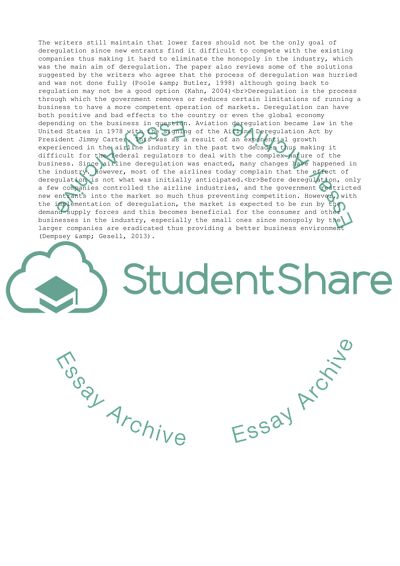Cite this document
(Aviation Deregulation Research Paper Example | Topics and Well Written Essays - 1750 words, n.d.)
Aviation Deregulation Research Paper Example | Topics and Well Written Essays - 1750 words. Retrieved from https://studentshare.org/management/1841428-aviation-deregulation
Aviation Deregulation Research Paper Example | Topics and Well Written Essays - 1750 words. Retrieved from https://studentshare.org/management/1841428-aviation-deregulation
(Aviation Deregulation Research Paper Example | Topics and Well Written Essays - 1750 Words)
Aviation Deregulation Research Paper Example | Topics and Well Written Essays - 1750 Words. https://studentshare.org/management/1841428-aviation-deregulation.
Aviation Deregulation Research Paper Example | Topics and Well Written Essays - 1750 Words. https://studentshare.org/management/1841428-aviation-deregulation.
“Aviation Deregulation Research Paper Example | Topics and Well Written Essays - 1750 Words”, n.d. https://studentshare.org/management/1841428-aviation-deregulation.


